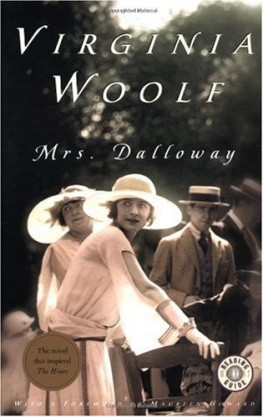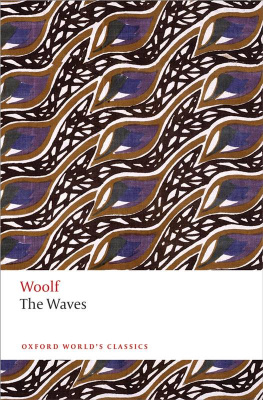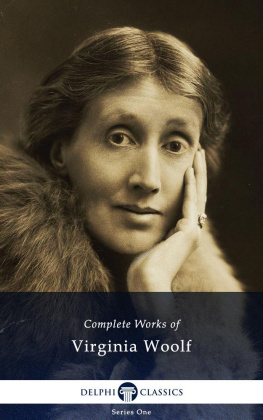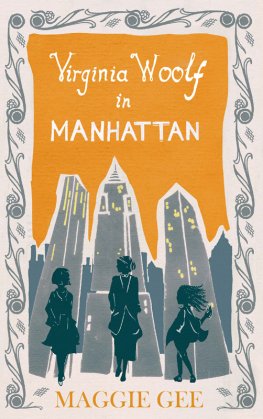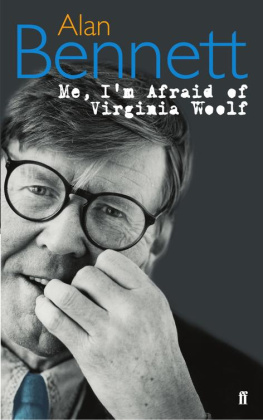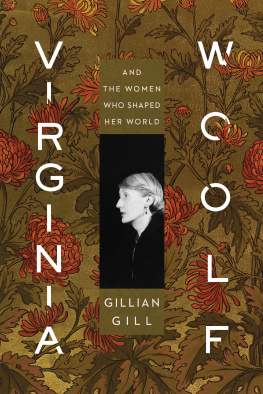PENGUIN BOOKS
To the Lighthouse
Virginia Woolf is now recognized as a major twentieth-century author, a great novelist and essayist and a key figure in literary history as a feminist and a modernist. Born in 1882, she was the daughter of the editor and critic Leslie Stephen, and suffered a traumatic adolescence after the deaths of her mother, in 1895, and her step-sister Stella, in 1897, leaving her subject to breakdowns for the rest of her life. Her father died in 1904 and two years later her favourite brother Thoby died suddenly of typhoid. With her sister, the painter Vanessa Bell, she was drawn into the company of writers and artists such as Lytton Strachey and Roger Fry, later known as the Bloomsbury Group. Among them she met Leonard Woolf, whom she married in 1912, and together they founded the Hogarth Press in 1917, which was to publish the work of T. S. Eliot, E. M. Forster and Katherine Mansfield as well as the earliest translations of Freud. Woolf lived an energetic life among friends and family, reviewing and writing, and dividing her time between London and the Sussex Downs. In 1941, fearing another attack of mental illness, she drowned herself.
Her first novel, The Voyage Out, appeared in 1915, and she then worked through the transitional Night and Day (1919) to the highly experimental and impressionistic Jacobs Room (1922). From then on her fiction became a series of brilliant and extraordinarily varied experiments, each one searching for a fresh way of presenting the relationship between individual lives and the forces of society and history. She was particularly concerned with womens experience, not only in her novels but also in her essays and her two books of feminist polemic, A Room of Ones Own (1929) and Three Guineas (1938). Her major novels include Mrs Dalloway (1925), To the Lighthouse (1927), the historical fantasy Orlando (1928), written for Vita Sackville-West, the extraordinary poetic vision of The Waves (1931), the family saga of The Years (1937), and Between the Acts (1941). All these are published by Penguin, as are her Diaries, Volumes I-V, selections from her essays and short stories, and Flush (1933), a reconstruction of the life of Elizabeth Barrett Brownings spaniel.
Stella McNichol is the author of a critical study of To the Lighthouse (1971) and of Virginia Woolf and the Poetry of Fiction (1990), and the editor of a group of Virginia Woolfs stories, Mrs Dalloways Party (1973).
Hermione Lee is the Goldsmiths Professor of English Literature and Fellow of New College, Oxford. She reviews for the Observer, The Times Literary Supplement, the Financial Times, the New York Review of Books, and elsewhere. Her books include The Novels of Virginia Woolf (1977), Elizabeth Bowen (1981, 1999), Philip Roth (1982), Stevie Smith: A Selection (1983), The Mulberry Tree: Writings of Elizabeth Bowen (1986), Willa Cather A Life Saved Up (1989), an edition of Willa Cathers stories (1989), two selections of stories by women writers, TheSecret Self(1985, reissued 1991), and Virginia Woolf (1996).
Julia Briggs is General Editor for the works of Virginia Woolf in Penguin.
TO THE LIGHTHOUSE

VIRGINIA WOOLF
TEXT EDITED BY STELLA McNICHOL
WITH AN INTRODUCTION
AND NOTES BY HERMIONE LEE

PENGUIN BOOKS
Published by the Penguin Group
Penguin Books Ltd, 80 Strand, London WC2R 0RL, England
Penguin Putnam Inc., 375 Hudson Street, New York, New York 10014, USA
Penguin Books Australia Ltd, 250 Camberwell Road, Camberwell, Victoria 3124, Australia
Penguin Books Canada Ltd, 10 Alcorn Avenue, Toronto, Ontario, Canada M4V 3B2
Penguin Books India (P) Ltd, 11 Community Centre, Panchsheel Park, New Delhi110 017, India
Penguin Books (NZ) Ltd, Cnr Rosedale and Airborne Roads, Albany, Auckland, New Zealand
Penguin Books (South Africa) (Pty) Ltd, 24 Sturdee Avenue, Rosebank 2196, South Africa
Penguin Books Ltd, Registered Offices: 80 Strand, London WC2R 0RL, England
www.penguin.com
To the Lighthouse first published by The Hogarth Press 1927
This annotated edition, published in Penguin Books 1992
Reprinted in Penguin Classics 2000
Introduction and notes copyright Hermoine Lee, 1992
Other editorial matter copyright Stella McNichol, 1992
All rights reserved
The moral right of the editors has been asserted
Except in the United States of America, this book is sold subject to the condition that it shall not, by way of trade or otherwise, be lent, re-sold, hired out, or otherwise circulated without the publishers prior consent in any form of binding or cover other than that in which it is published and without a similar condition including this condition being imposed on the subsequent purchaser
CONTENTS
Bibliographical Note
The following is a list of abbreviated titles used in this edition.
MS: To the Lighthouse: The Original Holograph Draft, transcribed and ed. Susan Dick (Toronto Universitv Press, 1982; Hogarth Press, 1983). Square brackets are used to indicate words deleted in original draft.
TL: To the Lighthouse, first British edn (Hogarth Press, 5 May 1927).
Moments of Being: Moments of Being: Unpublished Autobiographical Writings of Virginia Woolf ed. Jeanne Schulkind (Chatto & Windus, 1976).
Diary: The Diary of Virginia Woolf, 5 vols., ed. Anne Olivier Bell (Hogarth Press, 1977; Penguin Books, 1979).
Letters: The Letters of Virginia Woolf, 6 vols., ed. Nigel Nicolson and Joanne Trautmann (Hogarth Press, 197580).
Essays: The Essays of Virginia Woolf 3 vols, (to be 6 vols.), ed. Andrew McNeillie (Hogarth Press, 1986).
CE: Collected Essays, 4 vols., ed. Leonard Woolf (Chatto &Windus, 1966, 1967).
Mausoleum: Sir Leslie Stephens Mausoleum Book (1895), introduced by Alan Bell (OUP, 1977).
Introduction
To the Lighthouse is the story of a marriage and a childhood. It is a lamentation of loss and grief for powerful, loved, dead parents, which Virginia Woolf wanted to call an elegy rather than a novel. It is, less apparently, about the English class-structure and its radical break with Victorianism after the First World War. It demonstrates the urgent need for an art form which could, though with great difficulty, adapt to and register that break. It is all these things at once.
Since fiction is not music or painting or film or unspoken thoughts, it requires formal strategies if it is to try and be several things at once. These strategies may be as complicated as a whole section written from the point of view of the passage of time, or as simple as a pair of brackets.
Mr Bankes, for instance, has a conversation in brackets on the telephone. He is talking to Mrs Ramsay about a train time. Then he looks out of the window to see what progress the workmen were making with an hotel which they were building at the back of his house. The stir among the unfinished walls reminds him of her incongruities. The work outside goes on, inside another pair of brackets (they were carrying bricks up a little plank as he watched them) while he builds up his version of Mrs Ramsays idiosyncrasies. More than one thing happens at once: what he says to Mrs Ramsay on the phone and what he thinks of saying; what he sees from his window and what he sees in his minds eye; and, in his minds eye, her beauty and her incongruities. More than one time coexists: the time of Mr Bankess narrative, which is under pressure to move onwards (Yes, he would catch the 10.30 at Euston; He must go to his work); the moments in which she appears to his minds eye; and, outside Mr Bankess brackets, the moment in which Mrs Ramsay is knitting her stocking and talking to James.




